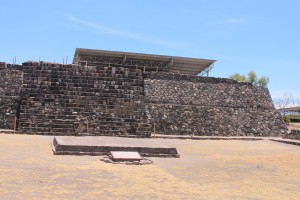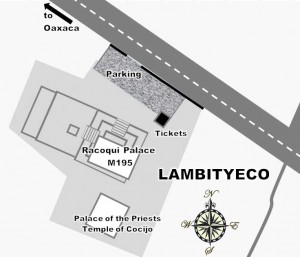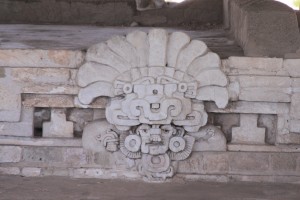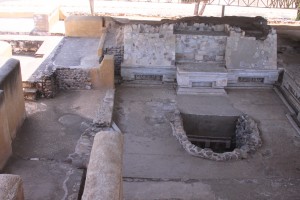Lambityeco, Oaxaca Mexico
Zapotec Culture
“Still Mound” Others claim “Hollow Hill”
Named by the Zapotec
HISTORICAL NOTES
DATES
700 BC – Occupation of the area by various hunter gatherers
600 – 700 AD The gradual weakening of Monte Alban. Lambityeco and other ceremonial sites began to flourish. Population increased.
750 AD Lambityeco was abandoned. Likely the population moved to Yagul.
1961 AD – Initial exploration and excavation of site
DISCUSSION
Lambityeco is known for the royal dynasty that is buried in Tomb 6 and the information that this discovery gave. Six generations of leaders were buried here and their likenesses are portrayed in sculpted stone frenzies in and around the tomb.
The Lambityeco history reflects the history of the area with the rise and fall of Monte Alban. Lambityeco was a big part of the Zapotec trading world and produced 90% of the salt for the Monte Alban Empire from their salty soil. The process involved disolving the slat from the soil with water and then boiling the water to obtain the salt crystals.
LOCATION & DESCRIPTION
Geographic Location
Lambityeco is located in south central Mexico in the Oaxaca Valley. Currently only a few buildings have been excavated. There are 197 mounds within the 117 hectares.
Map
Entrance
When you park your vehicle you will see the ticket booth to the left of the site. Here you will be charged the standard fees.
MAJOR GROUPINGS & STRUCTURE DESCRIPTIONS
Temple of the Cocijo
The Temple of the Cociji or Palace of the Priests is a central patio surrounded walls. The palace patio likely served as a religious school for nobels and the priestly class.
Two identical masks of the God Cocijo adorn one wall. The Cocijo carry lightening and rays in one hand sybolizing power over the sky and in the other holds an overflowing vase demonstrain his power over the rains and watee. Each has a feathered headress, There is a glyph in between the masks of a jaguar.
Tomb 2
Tomb 2 contains the remains of four generations of priests and their wives. It is simply decorated and located on the east side of the plaza.
Moument 195 or Palace of the Racoqui
There are 4 palaces dicovered under Monument 195. This particular one has two patios – north and South. The rooms to the south patio are elequently decoratd and belong to the Coqui or ruler. The north rooms belong to the Coqui family.
Included in this area is an altar with sculped friexes, an exsusitly scultpured stairwell and Tomb 6. The inverted pryamid and lines are interpreted to mean rays in the sky and refer to the Zapotec God Cocijo – the God of the Ray. These frets are dated to 650 AD and are the oldest in the area.
Tomb 6
Located in the central patio, Tomb 6 is the place where the Racoqui and his wives were burried. Sculpted portraits of some of the individuals decorate the tomb walls. The frienzies show the Rocoqui holding femurs. Interestingly enough the majority of bodies did not contain the femurs. It is surmised that the new leader carried the femor of the dead Racoqui to demonstrate that they were the inherited leader.
HOURS
Open Daily from 8 am to 5 pm. There is a watchman at the gate who will charge you the standard fee & extra for video cameras.
Admission 2014 36 pesos. Free on Sundays for nationals and Mexican residents.
Allow ½ an hour
This is a small site to view and can easily be combined with other sites on route to Mitla. It has a set of stairs that are even and safe to ascend. Good shoes with non-slip soles are always a plus. There is very little shade so bring a hat, sunglasses and sunscreen.
GETTING THERE
GPS – North 16.58.18 W 16.97.16
Tours and tour buses go to Lambityeco as they go to Mitla.
Drive from Oaxaca:
Take Highway 190 south of Oaxaca towards Mitla. The ruins are on your right hans side of the Highway between KM 30 & 31.



